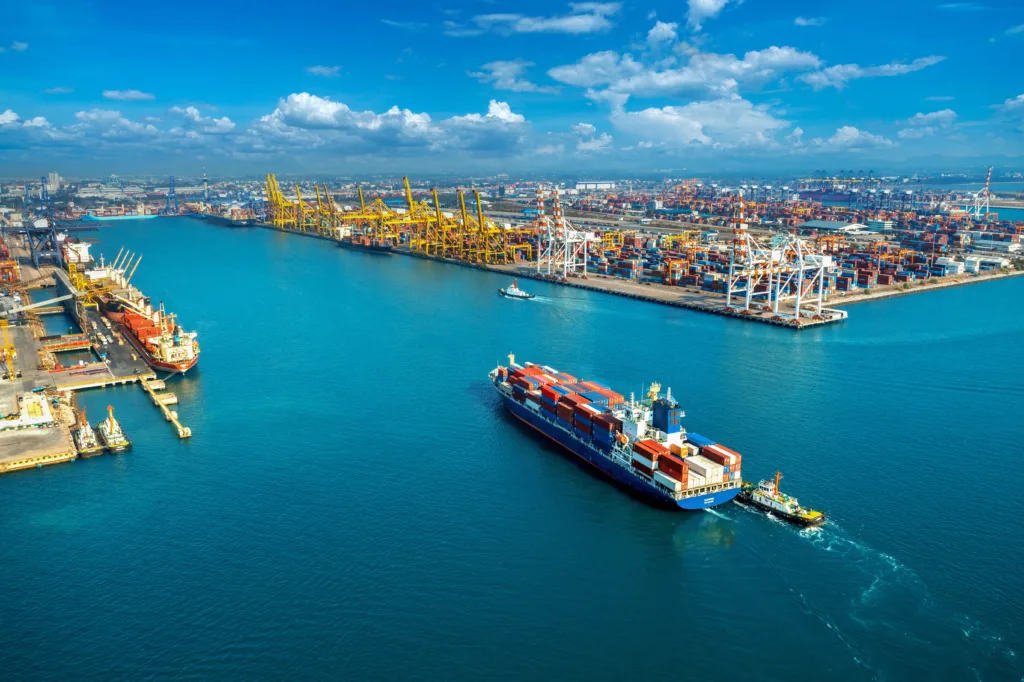So, you’ve poured your heart and soul into writing a book. Congratulations! Now comes the exciting yet sometimes daunting task of turning your manuscript into a tangible product that readers can hold in their hands. This is where book printing and logistics come into play.
Book printing and logistics issues can range from print quality problems (like color inconsistencies or binding errors) to logistical headaches like shipping delays and inventory management challenges. To avoid these pitfalls, carefully select your printing and logistics partners, optimize your processes, and develop contingency plans for unexpected issues.
Whether you’re a self-published author or a small press, understanding the ins and outs of this process is crucial for a smooth and successful publishing journey. And let’s be honest, the past few years haven’t exactly been a walk in the park for the printing and logistics industry. The pandemic threw a wrench into the gears, causing disruptions and delays that rippled through the entire supply chain.
But fear not! This guide will equip you with the knowledge and strategies you need to navigate the sometimes-complex world of book printing and logistics. Let’s dive in!
Common Book Printing & Logistics Issues

Before we jump into solutions, let’s take a look at some of the common issues you might encounter during the book printing and logistics process. Being aware of these potential problems can help you prepare and make informed decisions.
Printing Issues
Print Quality Problems: Ever received a printed product that looked completely different from what you expected? It happens! Common print quality issues include:
- Color inconsistencies: The colors in your printed book might not match the colors you see on your screen. This can be due to differences in color profiles, ink types, or printing processes. Imagine your vibrant cover art looking dull and lifeless in print – not a good look!
- Binding errors: Pages might be misaligned, glued incorrectly, or even fall out. Different binding types have their own quirks and potential for errors. To learn more about the various binding options and their impact on quality, see 10 Types of Book Binding You Should Know About.
- Paper quality concerns: The paper might be too thin, too thick, or have an unsuitable finish. Paper quality can significantly impact the look and feel of your book, so it’s important to choose wisely. For detailed insights on selecting the right paper, refer to What Are the Different Types of Paper for Book Printing?.
Production Delays: Time is of the essence when it comes to book publishing. Delays can push back your launch date and disrupt your marketing plans. Here are some common causes of production delays:
- Unexpected downtime at printing facilities: Equipment malfunctions or unexpected closures can cause significant delays. Remember the time a major printing facility had to shut down due to a fire? It caused chaos for publishers everywhere!
- Material shortages: Remember the paper shortage we experienced during the pandemic? Sometimes, essential materials like paper or ink might be in short supply, impacting production timelines. You can learn more about it in this article on The Pandemic, Paper Shortages, and the Supply Chain.
Cost Overruns: Printing a book can be expensive, and unexpected costs can strain your budget. Watch out for these common culprits:
- Hidden fees: Some printers might have hidden fees for things like setup costs, plate charges, or revisions. Always ask for a detailed quote upfront to avoid surprises. For tips on reducing costs, check out 10 Tips to Reduce Your Book Printing Costs Today!.
- Price fluctuations for materials: The cost of materials like paper and ink can fluctuate, impacting your overall printing costs.
Logistics Issues

Shipping Delays: Getting your books from the printer to your readers can be a logistical challenge. Here are some factors that can cause shipping delays:
- Unexpected delays due to weather or other events: Remember the Suez Canal blockage in 2021? It caused major disruptions to global shipping, highlighting the vulnerability of supply chains to unexpected events.
- Customs clearance issues: If you’re shipping books internationally, customs clearance can be a complex process that can cause delays. For more on navigating international shipping, see Ship Books from China: The Ultimate Guide (2025).
Damage or Loss of Books:

No author wants to see their precious books damaged or lost in transit. Here are some common causes:
- Improper packaging: Books need to be packaged securely to withstand the rigors of shipping.
- Handling issues during transit: Rough handling by shipping companies can damage books, especially those with delicate covers or bindings.
Inventory Management Challenges: Balancing supply and demand can be tricky. Here are some challenges you might face:
- Overstocking and storage costs: Printing too many books can lead to high storage costs and potential waste.
- Understocking and missed sales opportunities: Running out of stock can lead to missed sales and frustrated customers.
Now that you have a better understanding of the potential issues, let’s move on to finding the right partners for your book printing and logistics needs.
Finding the Right Printing and Logistics Partners
Okay, now that you know what could go wrong, let’s talk about how to make things go right! Choosing the right partners for printing and logistics is like assembling a superhero team for your book. You need a reliable printer to bring your vision to life and a logistics expert to get your book into the hands of eager readers.
Selecting a Book Printer
Table: Key Considerations for Choosing Printing Partners
| Printing Partner | Key Considerations | Description |
|---|---|---|
| Experience and Specialization | Genre and format specialization | Ensure the printer has experience with books similar to yours. |
| Specialized printers may offer better quality and service for specific types. | ||
| Printing Technology | Offset vs. Digital Printing | Offset is ideal for large print runs; digital is cost-effective for smaller runs. |
| Print-on-Demand (POD) | Suitable for reducing upfront costs and inventory management. | |
| Pricing and Transparency | Detailed quotes, hidden fees | Compare quotes from multiple printers and ensure no hidden costs. |
| Turnaround Time | Production timeline, reliability | Check the printer’s track record for meeting deadlines. |
| Sustainability Practices | Eco-friendly materials, certifications (e.g., FSC) | Important for environmentally conscious authors. |
Finding the perfect printing partner can be a bit like dating. You need to find someone who understands your needs, shares your values, and can deliver on their promises. Here are some key factors to consider when choosing a printer:
-
Experience and Specialization: Does the printer have experience working with books similar to yours? Some printers specialize in specific genres or formats, so it’s helpful to find one that aligns with your project.
-
Printing Technology and Equipment: Different printing technologies have their own strengths and weaknesses. Offset printing is often favored for large print runs, and while it might seem like the go-to for high quality, don’t discount digital printing! It’s more cost-effective for smaller quantities, and some argue that it allows for greater attention to detail. And if you’re looking for a more sustainable option, consider print-on-demand (POD).
It’s important to remember that bigger doesn’t always mean better. Large printing facilities with all the bells and whistles might not give your smaller project the attention it deserves. You might find that a mid-size printer specializing in working with self-published authors like you offers more flexibility, personalized service, and a smoother communication process.
-
Pricing and Transparency: Get quotes from multiple printers and compare their pricing. Make sure there are no hidden fees or surprises lurking in the fine print.
For a hassle-free experience and transparent pricing, get a quote from Mainland Printing today! -
Turnaround Time and Reliability: How long will it take to print your books? Does the printer have a good track record of meeting deadlines? Ask for references or read online reviews to get a sense of their reliability.
-
Sustainability Practices: If environmental responsibility is important to you, look for a printer that uses sustainable materials and practices. Some printers have certifications like the Forest Stewardship Council (FSC) certification, which ensures that the paper they use comes from responsibly managed forests.
Resources and Tools:
To help you find the perfect printer, here are some helpful resources:
- List of reputable book printers: [Include links to a few reputable book printers]
- Online printing cost calculators: [Link to a printing cost calculator]
- Industry associations and directories: [Link to the Book Manufacturers’ Institute]
Selecting a Logistics Provider
Table: Key Considerations for Choosing Logistics Partners
| Logistics Partner | Key Considerations | Description |
|---|---|---|
| Service Area and Network | Domestic vs. international shipping | Ensure the provider covers your target shipping locations. |
| Shipping Methods | Speed vs. cost-effectiveness | Choose based on budget and delivery timeline. |
| Tracking and Delivery Confirmation | Reliable tracking system, delivery confirmations | Essential for monitoring shipments and ensuring they reach customers. |
| Insurance and Liability | Coverage for damage or loss | Protect against financial losses due to shipping issues. |
Once your books are printed, you need a reliable logistics partner to get them where they need to go. Here are some factors to consider when choosing a logistics provider:
- Service Area and Network: Does the provider offer services in the areas where you need to ship your books? If you’re shipping internationally, make sure they have a strong global network.
- Shipping Methods and Speed: Different shipping methods have different speeds and costs. Consider your budget and timeline when choosing a shipping method.
- Tracking and Delivery Confirmation: You’ll want to be able to track your shipments and receive confirmation when they’re delivered. Make sure the provider offers a reliable tracking system.
- Insurance and Liability: Accidents happen, and it’s important to have insurance in case your books are damaged or lost in transit. Make sure the provider offers adequate insurance coverage.
Choosing the right partners is essential for a smooth and successful book publishing experience. Take your time, do your research, and don’t be afraid to ask questions. After all, you’re building a team to help you bring your book to the world!
Optimizing Your Printing & Logistics Processes
Alright, you’ve found your dream team – a fantastic printer and a reliable logistics provider. Now, it’s time to optimize your processes to ensure everything runs smoothly and efficiently. Think of it as fine-tuning a well-oiled machine to get the best possible performance.
Streamlining the Printing Process
File Preparation: This might seem like a no-brainer, but proper file preparation is crucial for a successful print job. Here’s a quick checklist to ensure your files are print-ready:
- Choose the right file format: Most printers prefer PDF files for their compatibility and ability to preserve formatting.
- Set up bleed and margins: Bleed refers to the extra space around the edges of your pages that gets trimmed off after printing. Margins are the blank spaces within the page. Setting these up correctly ensures that your design elements don’t get cut off and your text is positioned correctly.
- Proofread and pre-press checks: Always proofread your files carefully before sending them to the printer. Check for typos, formatting errors, and any other issues that might affect the final product.
Effective Communication with Your Printer: Clear communication is key to a successful printing process. Here are some tips for communicating effectively with your printer:
- Provide clear specifications and instructions: Be specific about your printing requirements, including paper type, binding style, quantity, and any special finishes.
- Regular updates and feedback: Stay in touch with your printer throughout the process and provide feedback on proofs or samples.
Quality Control Measures: Don’t just assume that your printed books will be perfect. Implement some quality control measures to ensure that the final product meets your expectations.
- Establish acceptance criteria: Define what constitutes an acceptable print quality. This might include things like color accuracy, binding integrity, and paper quality.
- Conduct inspections and spot checks: When you receive your printed books, inspect them carefully for any defects.
Optimizing the Logistics Process
Packaging and Labeling: Proper packaging and labeling are essential for ensuring that your books arrive at their destination safely and efficiently.
- Choose appropriate packaging materials: Use sturdy boxes and protective materials like bubble wrap or packing peanuts to prevent damage during transit.
- Proper labeling for efficient delivery: Make sure your labels are clear, accurate, and include all necessary information, such as the recipient’s address, your return address, and any special handling instructions.
- Secure packaging to prevent damage: Reinforce your packaging with strong tape and consider using corner protectors for added protection.
Selecting the Right Shipping Method: The best shipping method depends on your budget, timeline, and destination.
- Cost-effectiveness vs. speed: If you’re on a tight budget, consider slower shipping methods like ground transportation. If you need your books delivered quickly, opt for faster methods like air shipping.
- Tracking and delivery timeframes: Make sure you choose a shipping method that offers tracking and provides estimated delivery times.
Effective Inventory Management: Managing your inventory effectively can help you avoid overstocking or understocking.
- Forecasting demand and planning print runs: Try to estimate the demand for your book and plan your print runs accordingly. This can be tricky, but tools like pre-orders and crowdfunding campaigns can help you gauge interest.
- Monitoring inventory levels and reordering: Keep track of your inventory levels and set up reordering points to ensure you don’t run out of stock.
Handling Returns Efficiently: Returns are a part of doing business, so it’s important to have a clear and efficient returns process.
- Establish a clear returns policy: Make sure your customers understand your return policy and how to initiate a return.
- Streamlining the returns process: Make it easy for customers to return books by providing prepaid shipping labels or offering refunds without requiring the book to be returned.
By optimizing your printing and logistics processes, you can ensure that your books are produced and delivered efficiently and effectively. This will not only save you time and money but also help you build a positive reputation with your readers.
Mitigating Risks and Overcoming Challenges
Even with the best planning and the most reliable partners, unexpected challenges can arise in the book printing and logistics process. But don’t worry, being prepared and knowing how to handle these challenges can make all the difference.
Identifying Potential Risks
Printing Risks:
- Production delays and missed deadlines: Printing can be a complex process with many moving parts. Unexpected issues can cause delays, pushing back your publication date.
- Quality issues and reprints: Even with the best quality control measures, printing errors can occur. Be prepared to address quality problems and negotiate reprints if necessary.
- Cost overruns and budget management: Unexpected costs can pop up, putting a strain on your budget. Keep a close eye on your expenses and have a contingency plan in case of cost overruns.
Logistics Risks:
- Shipping delays and disruptions: Shipping can be unpredictable, with delays caused by weather, traffic, or other unforeseen events.
- Damage or loss of shipments: Despite your best efforts to package your books securely, damage or loss can still occur during transit.
- Customs and import/export issues: If you’re shipping books internationally, be aware of the potential for customs delays or issues with import/export regulations.
Other Risks:
- Copyright infringement: Make sure you have the necessary rights to publish your book and that your content doesn’t infringe on any copyrights.
- Contractual disputes: Clear contracts with your printer and logistics provider are essential to avoid disputes.
- Business continuity planning: What happens if your printer or logistics provider goes out of business? Have a backup plan in place to ensure your book production can continue.
Developing Contingency Plans
Alternative Printing and Logistics Options:
- Identify backup printers and shipping providers: Don’t put all your eggs in one basket. Have a list of alternative printers and shipping providers in case your primary partners are unable to fulfill your needs.
- Negotiate flexible contracts: Try to negotiate contracts that allow for some flexibility in case of unexpected events.
Risk Mitigation Strategies:
- Insurance and liability coverage: Make sure you have adequate insurance coverage to protect yourself from financial losses due to damage, loss, or other issues.
- Diversification of suppliers and shipping routes: Diversifying your suppliers and shipping routes can help you mitigate risks associated with disruptions in the supply chain.
- Communication and transparency: Maintain open and honest communication with your partners throughout the process. This can help you identify and address potential problems early on.
By being prepared and proactive, you can effectively mitigate risks and overcome challenges in the book printing and logistics process. Remember, even the most experienced publishers face unexpected hurdles. The key is to stay informed, adapt to changing circumstances, and never give up on your publishing dreams!
Industry Insights and Future Trends
The world of book printing and logistics is constantly evolving. New technologies, changing consumer preferences, and global events can all impact the way books are produced and delivered. To stay ahead of the curve, it’s important to keep your finger on the pulse of the industry and be aware of emerging trends.
The Rise of Print-on-Demand (POD)
Print-on-demand (POD) has revolutionized the book printing industry, especially for self-publishers and small presses. With POD, books are printed only when they are ordered, eliminating the need for large print runs and costly inventory. This model offers several benefits:
- Lower Costs: POD eliminates the upfront costs of printing a large quantity of books, making it a more affordable option for those with limited budgets.
- Reduced Inventory: No more storing boxes of books in your garage! POD eliminates the need for inventory management and reduces the risk of unsold books.
- Flexibility: POD allows you to easily update your book’s content or cover without having to reprint a large quantity of books.
While POD offers many advantages, it’s important to be aware of its limitations. The per-unit cost of POD can be higher than traditional offset printing, especially for larger print runs. Additionally, POD might not be suitable for all types of books, particularly those with complex designs or special finishes.
Sustainability in Book Printing and Logistics

Consumers are increasingly concerned about the environmental impact of their purchases, and books are no exception. Sustainable printing and logistics practices are becoming increasingly important in the publishing industry.
- Eco-friendly materials: Look for printers that use recycled paper, soy-based inks, and other sustainable materials.
- Reduced waste: Choose printers that minimize waste through efficient processes and responsible disposal of materials.
- Carbon-neutral shipping: Consider using shipping providers that offer carbon-neutral shipping options.
By adopting sustainable practices, you can not only reduce your environmental footprint but also appeal to environmentally conscious readers.
Technological Advancements
Technology is constantly changing the landscape of book printing and logistics. Here are a few key advancements to watch:
- Automation and robotics: Automation is increasing efficiency and reducing costs in printing and logistics processes.
- Digital printing and inkjet technology: Advancements in digital printing are making it a more viable option for a wider range of books.
- AI and blockchain: Artificial intelligence and blockchain technology are being explored for their potential to improve efficiency, security, and transparency in the publishing industry.
Adapting to a Changing Landscape
The book printing and logistics industry is facing ongoing challenges, such as labor shortages, rising costs, and supply chain disruptions. To thrive in this environment, self-publishers and small presses need to be adaptable and proactive.
- Stay informed: Keep up with industry news and trends to anticipate challenges and opportunities.
- Build strong relationships: Develop strong relationships with your printing and logistics partners to ensure open communication and collaboration.
- Embrace innovation: Be open to new technologies and strategies that can improve your efficiency and competitiveness.
By staying informed and adaptable, you can navigate the ever-changing world of book printing and logistics and achieve your publishing goals.
Conclusion
And there you have it! We’ve explored the intricate world of book printing and logistics, from identifying potential pitfalls to embracing future trends. Remember, the journey of bringing your book to life can be an adventure, filled with twists and turns. But with careful planning, the right partners, and a proactive approach to problem-solving, you can navigate these challenges and achieve your publishing dreams.
Here are some key takeaways to keep in mind:
- Do your research: Thoroughly research your printing and logistics options to find the best fit for your needs and budget.
- Communicate clearly: Maintain open and honest communication with your partners throughout the process.
- Be prepared for the unexpected: Develop contingency plans to address potential risks and challenges.
- Embrace innovation: Stay informed about industry trends and new technologies to optimize your processes.
Remember, your book is a unique creation, and it deserves the best possible care and attention during the printing and logistics process. By following the guidance in this article, you can ensure that your book makes a smooth and successful journey from manuscript to masterpiece.







